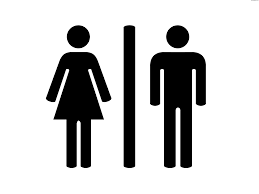Parallel sound - Music that matches what you see in the film.
Contrapuntal sound - sound that opposes what you see in the film.
Sound bridge - when the music from one scene goes into the next.
Ambient sound - sound that you expect to hear in a location. For example, traffic.
Foley sound - everyday sounds that are added to a certain clip.
Tuesday
Monday
The Hayes Code
The Hayes code was created in the 1920's by Hollywood and is a way of censoring media texts.
This was created because people believed that if certain behaviour was conveyed on screen, passive
mass audiences would imitate this behaviour, and so therefore it should not be shown on screen as it
was felt people should not act this way in real life.
Things that the Hayes code stopped from being shown where:
This was created because people believed that if certain behaviour was conveyed on screen, passive
mass audiences would imitate this behaviour, and so therefore it should not be shown on screen as it
was felt people should not act this way in real life.
Things that the Hayes code stopped from being shown where:
- White slavery
- scenes of actual childbirth
- using words such as Christ,Lord and God in a rude way.
- Misuse of the American flag
- Ridicule of the clergy
- Showing leg above the knee.
The Uses and gratifications theory
The uses and gratifications theory suggests that audiences watch media texts because...
- Personal identity - the media has created the way we dress, our views, and our personalities
- Surveillance - we watch the media to see what is going on in the world.
- pleasure
- diversion/escapism
- we watch the media to gain information about social/cultural/global issues.
- and to understand emotions.
The effects model/ hyperdermic syringe
The effects model has three main points that it believes watching the media will do to an audience,
these are:
- Imitation - an audience will copy what they see
- Catharsis - Audiences watch tv shows that convey characters with bad lives as it offers them a form of
escapism from their own lives, as they feel that the characters life is worse than their own, and so their
issues are not as bad. This is through the narrative of a media text.
- Desensitization - modern media texts are having an effect on us, as we are becoming used to seeing
acts of violence, graphic sex and bad language, and so it does not have as large an effect on us as it
once did.
these are:
- Imitation - an audience will copy what they see
- Catharsis - Audiences watch tv shows that convey characters with bad lives as it offers them a form of
escapism from their own lives, as they feel that the characters life is worse than their own, and so their
issues are not as bad. This is through the narrative of a media text.
- Desensitization - modern media texts are having an effect on us, as we are becoming used to seeing
acts of violence, graphic sex and bad language, and so it does not have as large an effect on us as it
once did.
Friday
Posters around school
From doing this activity, i learnt that the posters around school, are not just aimed at students, but at
everyone in the setting, and so therefore advertising, all though having its on specific target audience is
aimed at everyone, and that there are subliminal messages in all the media round the school; this links to
my brief, as it conveys that my title sequence will also have subliminal messages and, although it will
have a specific target audience, it will also be aimed at the majority of people.
Monday
Audience theory
Whenever you make a piece of media - you have a target audience.
Audiences can be broken down by:
Audiences can be broken down by:
- age
- gender
- race (ethnicity)
- hobbies and interests
- experiences
- class
- regional identity
- disability
- religion
There are 3 main audience theories that we can apply to help us come to a better understanding about the relationship between texts and audiences:
- The effects model/ hypodermic model
- The uses and gratifications model
- Reception theory
We are also going to look at the the two step model, and the agenda setting theory.
Primary - to consciously engage with the media text.
Secondary - kind of engaging, but doing something else as well. - active
Tertiary - engage with it subconsciously. - passive
Ideology links to representation, as when you represent something, you are conveying a set of
ideology's, they are a set of values, principles, beliefs. A negative dominant ideology would be that
blondes are dumb.
ideology's, they are a set of values, principles, beliefs. A negative dominant ideology would be that
blondes are dumb.
The effects model
1. imitation.
2. Catharsis - when we look at someone else's life who is worse than ours, we don't think our life is so bad.
3. Desensitization - having an effect on us, as we are used to seeing acts of violence, graphic sex and bad language in the media, so it does not affect us any more.
The effects model tends to be something that is quite negative.
The uses and gratifications theory
We view the media because ...
The uses and gratifications theory
We view the media because ...
- Personal identity - media has created the way we dress, our views, personalities etc. - so we no longer choose to view the media, and we are becoming tertiary.
- surveillance - what's going on in the world.
- pleasure
- diversion/escapism
- social/cultural/global issues
- to understand emotions.
Sunday
Structuralists
Structuralists
Structuralists believe there is no meaning without binary opposites, for example, how do you know
what hot is if cold does not exist?
They also believe, that we do not make our own interpretation, they believe meaning is only created by
knowing what it is not.
A later French philosopher, Jacques Derrida gave the insight that these ‘ binary opposites’ are not
equal. And a culture tends to favor one side of each opposite, and judge it in a more positive or
privileged light.
E.g. calm/moody, wealthy/poor, male/female, gay/ straight, young/old.



Semiotics ...
Semiotics is the study of sign systems which allow us to deconstruct media texts to understand how meaning is being created.
A combination of signs creates a code - which can be understood through the viewers cultural or social
context. For example, a person wearing particular items of clothing together, may take on a cultural
identity.
Likewise, the word itself would act as a signifier of this image.
Connotation – the interpreted meaning of a sign (s).
Denotation – the literal meaning of a sign.
E.g. a rose denotes nature/flowers – but it connotes love.

Signs are polysemic!
Polysemic refers to the fact that all signs have more than one meaning.
Therefore, polysemy also applies to the ideas that many signs will be ‘iconic’, ‘symbolic’, and ‘indexical’.
Iconic – those which work through resemblance (photographs)
Symbolic – those which are learned (arbitrary signs, such as words, e.g. a stop sign)..svg)
Indexical – those which work through a causal link, (e.g. smoke is an index of fire).
Signifier
The object itself
Signified
what it represents
A sign is the smallest element of meaning, signs will be grouped together to create larger units of
meaning; these are called codes, which can be decoded or interpreted.
meaning; these are called codes, which can be decoded or interpreted.
A combination of signs creates a code - which can be understood through the viewers cultural or social
context. For example, a person wearing particular items of clothing together, may take on a cultural
identity.
Likewise, the word itself would act as a signifier of this image.
Connotation – the interpreted meaning of a sign (s).
Denotation – the literal meaning of a sign.
E.g. a rose denotes nature/flowers – but it connotes love.

Signs are polysemic!
Polysemic refers to the fact that all signs have more than one meaning.
Therefore, polysemy also applies to the ideas that many signs will be ‘iconic’, ‘symbolic’, and ‘indexical’.
Iconic – those which work through resemblance (photographs)

Symbolic – those which are learned (arbitrary signs, such as words, e.g. a stop sign).
Indexical – those which work through a causal link, (e.g. smoke is an index of fire).

Subscribe to:
Posts (Atom)



